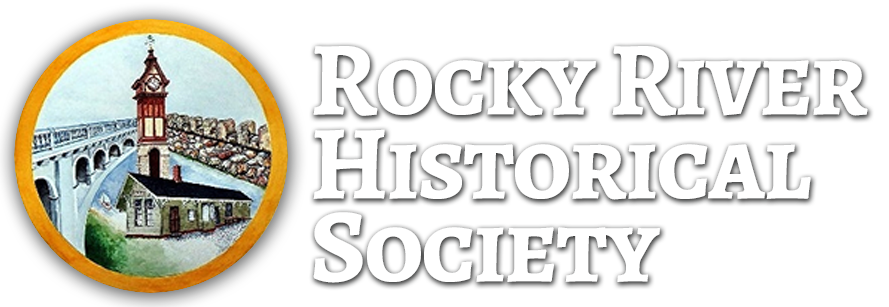A Look Back at Rocky River’s Beginnings
A Look Back at Rocky River’s Beginnings
Long before Rocky River had a public pool, bustling restaurants, and Detroit Road traffic that could test a saint’s patience, there was… well, not much Just one ambitious Eastern landowner with a dream—and some serious optimism.
It was 1805 when Gideon Granger stood on the banks of a river that local Native Americans called “The Rocky River.” With a bright gaze, he imagined a mighty city rising from the wilderness.
Three years later, Philo Taylor built a modest house at the river’s mouth. More settlers trickled in, and the newborn community became Granger City—because Gideon Granger wasn’t just planting roots, he was sowing a legacy.
But there was a small hitch: Gideon had picked the wrong side of the river.
By 1819, eighteen families on the east bank petitioned to rename their settlement East Rockport—perhaps wanting a little distance from the grand ambitions (and name) of Gideon Granger. Meanwhile, across the river, things were beginning to take root. As early as 1815, Joseph Larwell, a key promoter of Granger City, began selling parcels of land on the west side. Settlers followed, along with a sawmill and pottery works, giving the area both structure and purpose. In 1821, a wooden plank toll bridge was built to connect the two sides—a practical, if slightly wobbly, link between east and west.
By 1891, the folks on the west side petitioned to be known as Rocky River Hamlet. After a mere twelve years (clearly, things moved at the speed of molasses in the 1800s), it became an official village in 1903. The first mayor, Mark Mitchell, even had a building named in his honor. See? Civic involvement pays off—sometimes in naming rights.
At the time, the village’s boundaries ran from Lake Erie south to around Shoreland Avenue, and it was part of Rockport Township, which stretched from today’s Westlake border all the way east to Kamm’s Corners.
Taverns, Street Names & Tales from the Town
One of the earliest buildings was the Silverthorne Tavern, built on the site of what later became the Westlake Hotel. Originally a waystation for travelers, it was rebuilt several times over. Remarkably, some of its original beams were repurposed and still survive in a house on Morley Court. So, when your friend brags about their home’s “original features,” they might not be bluffing.
As for street names: Wagar used to be Columbus (or Columbia, depending on whom you asked), and Water Street led to the river and its small industrial district. Detroit Road was originally called North Ridge Road—and in 1899, only one side was paved. Progress!
Large tracts of land were owned by families whose names are still familiar today: Dean, Christensen, Eells, Zeager, and Pease. Senator Clifford Beach, a friend of Governor Woods, owned a sprawling farm near the lake and generously donated much of it to the community. Beach Elementary now stands on that land, and both the Beach Cliff subdivision and Beach Cliff Boulevard (although the name got a little flipped over time) honor the senator’s legacy.
Right around where Old School Pizza & Wings stands today, once stood the town’s livery stable. Across the street, near the old City Hall and the police and fire station (now the Dixon Building), stood the blacksmith’s shop. A dry goods store, grocery, meat market, and several other revitalized buildings rounded out the scene. The Mitchell Building—appropriately named after the first mayor—still stands as a reminder of those early civic roots.
All Aboard: The Railroad Era
During the Civil War era, the railroads rolled into town. The so-called “Dummy Railroad” (named for its steam engine, not its smarts) eventually gave way to the Interurban system, which stretched all the way to Toledo. Today, Beaconsfield Boulevard gives quiet, divided testimony to the old right-of-way.
Schools began to pop up along Wooster Road, near Center Ridge, and behind what’s now Heinen’s.
By 1960, Rocky River had grown up enough to become a charter city. Civic improvements rolled in: a new fire and police department, community pool, tennis courts, beaches, and a summer band concert or two to keep the spirit lively.
Today, Rocky River boasts an estimated 21,468 residents (2024), more than 1,500 businesses, and a robust love for its past.
Law & Order, River Style
Law enforcement in River began in 1909 with Marshal L. Roy Martin—uncle of future mayor Earl Martin (1970–1993). The first police chief, Matt Andersen, hired officers the old-fashioned way: no written exams, no agility drills. If you could do the job, congratulations—you got the badge.
Chief Gunder Robertson followed and oversaw the city’s first police car in the 1930s. Before that? It was all motorcycles and hand signals. On Sunday nights, River’s finest were mostly busy directing traffic across the bridge. Detectives? They were freelance.
In 1942, Chief Albert Cornish was sworn in and famously led the department’s pistol team to an Ohio championship. Not exactly your average desk job.
In 1949, Chief Robert Kelley took over, remembered as one of the city’s most respected lawmen.
And as the list of chiefs grew, so did the department. From that first badge to today’s fully equipped force—with cruisers, boats, a juvenile bureau, and enough auxiliary officers to field a pretty competitive softball team—Rocky River’s commitment to public safety has never wavered.
So the next time you’re stuck on Detroit Road or waiting on your double scoop at Mitchell’s, take a second and look around. You’re standing in a place that started with a dream on a quiet riverbank over 200 years ago. The old wooden bridge may be gone, but the spirit that built this community - Still here—steady, rooted, and very much alive.
